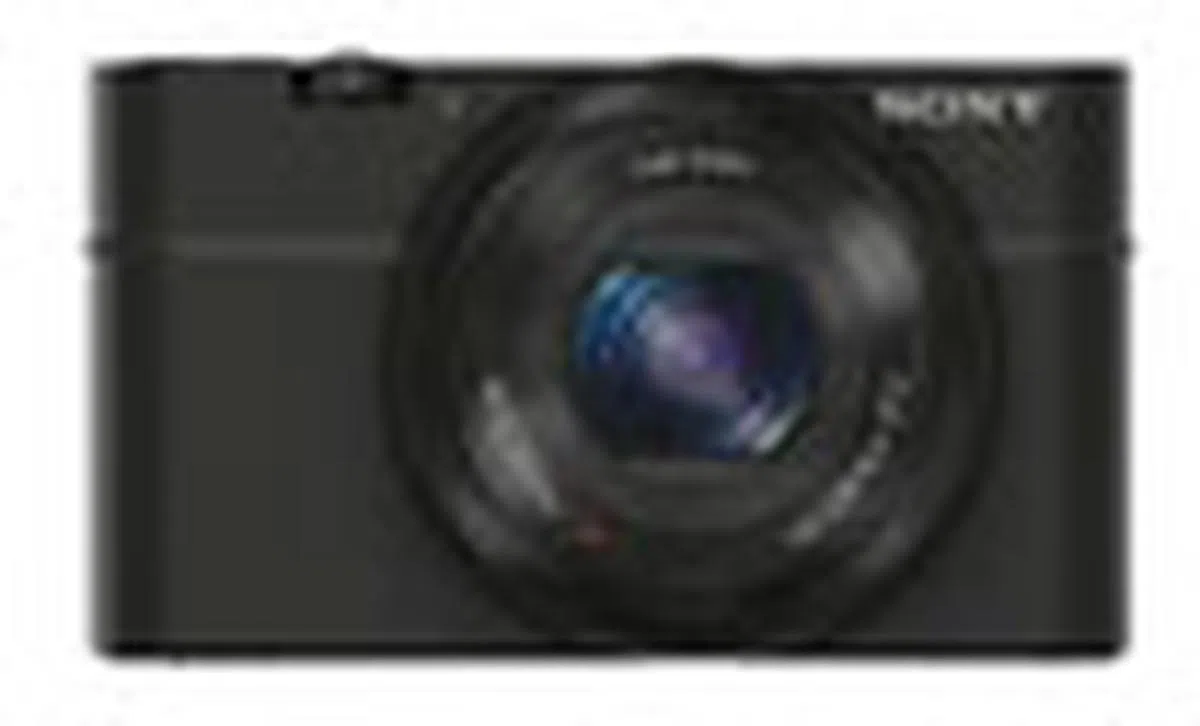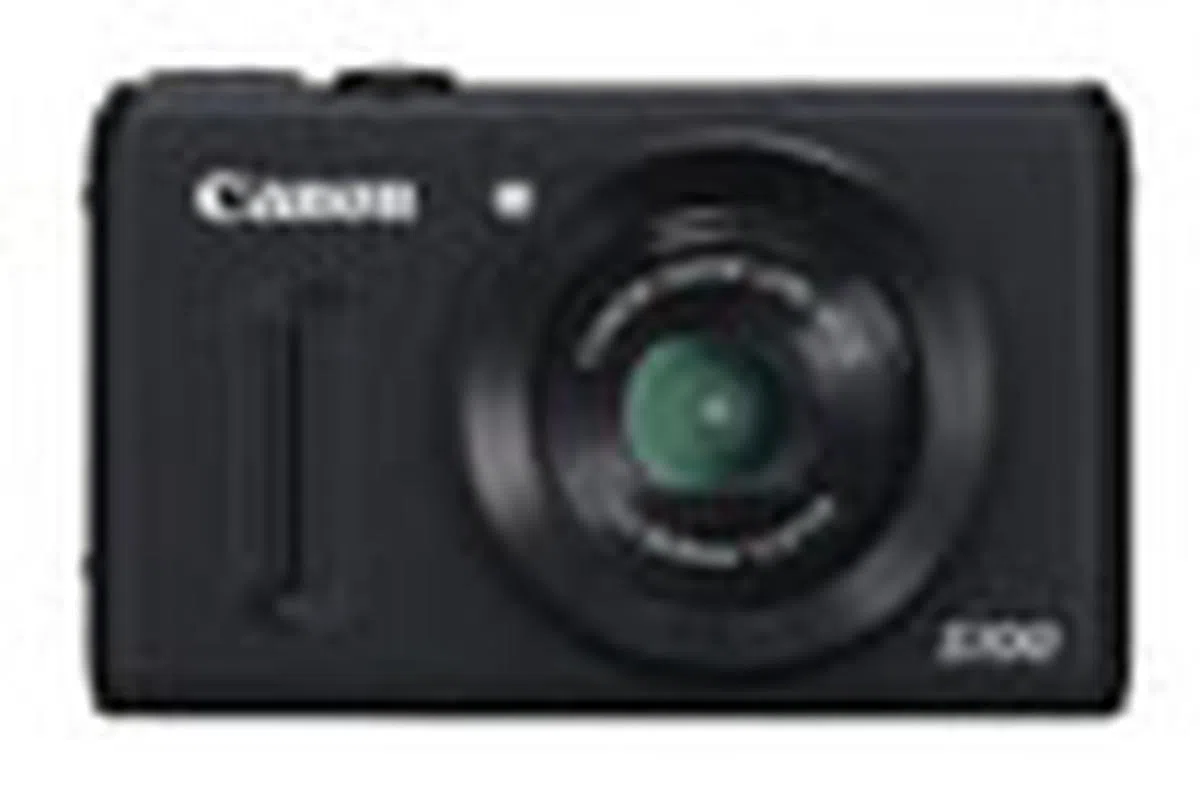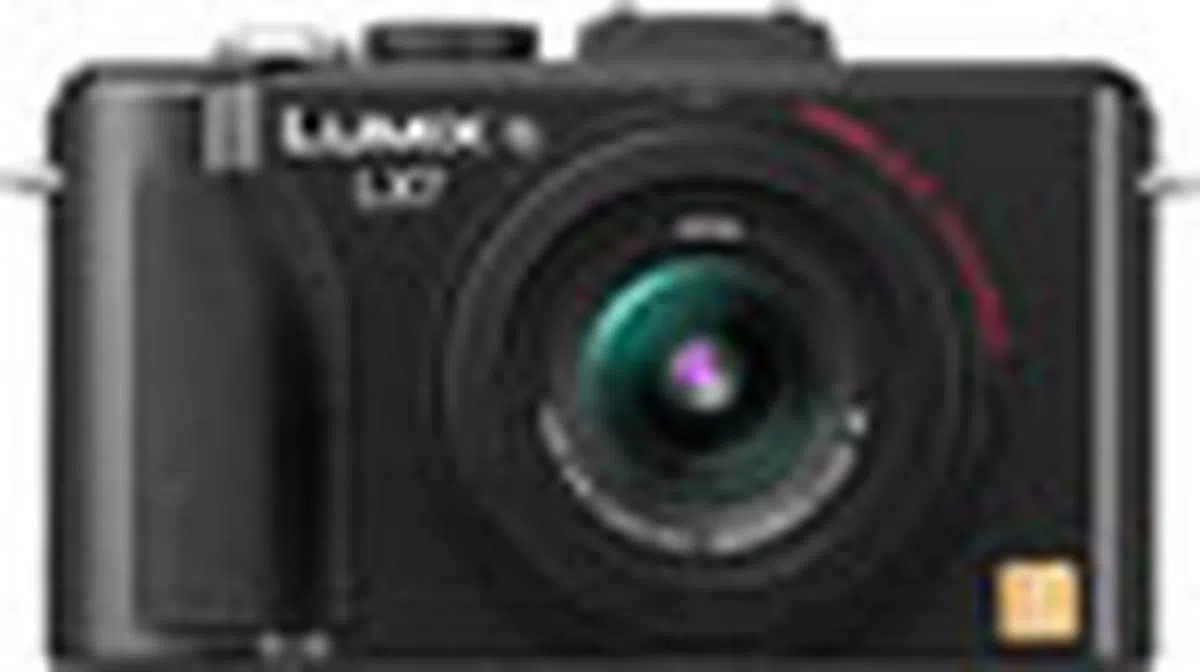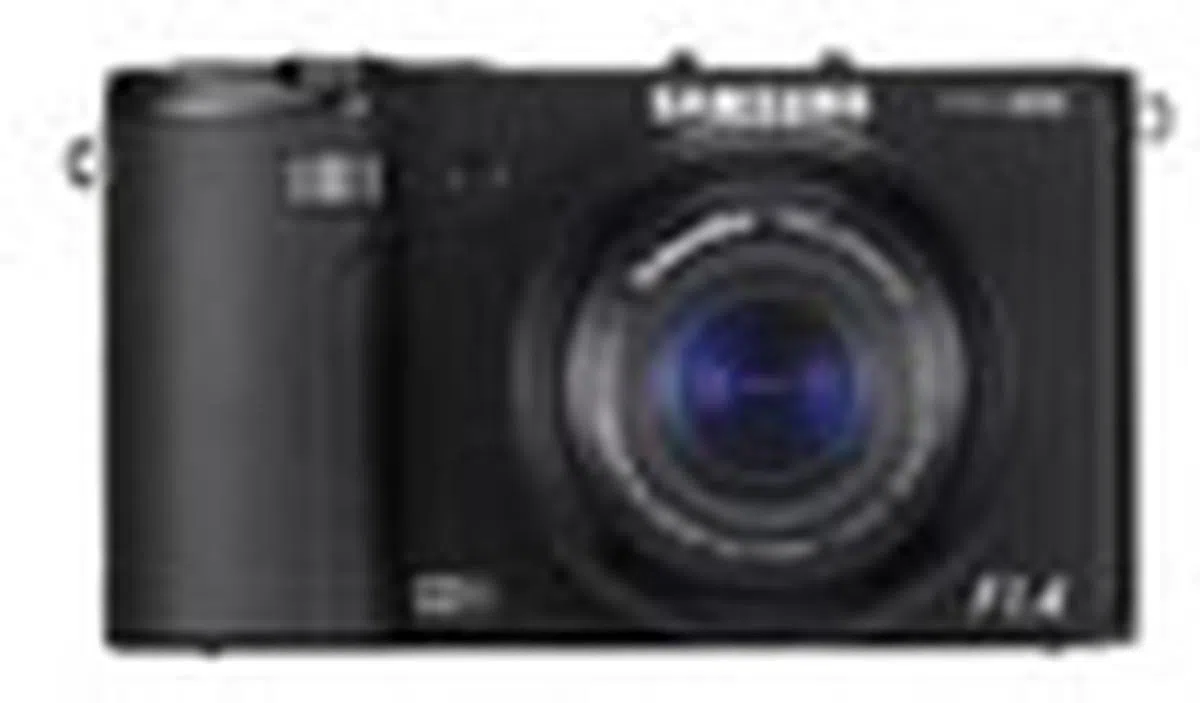Sony Cyber-shot RX100 - A Compact Dream
The RX100 is Sony's latest entry to the premium digital compact camera market. While the RX100 doesn't pack GPS or Wi-Fi, it seems Sony is intent on providing a pure shooting experience with the RX100’s fast lens and large sensor. Could it be the dream digital compact we have been waiting for?
By HardwareZone Team -
Introduction
There's bound to be a camera that is suitable for even those with the most discerning of tastes. There's the digital compact for those who want something small, light and easy to use. Prosumer and bridge cameras will appeal to you if you happen to want something with a bit more features and better image quality. Mirrorless system cameras and DSLRs cater to the crowd who want flexibility with interchangeable lenses and superb image quality. Thus, form has always followed function when it comes to cameras. And in some cases, compromises have to be made. It's difficult to fit a large sensor in something small and light, and conversely larger cameras can never be light or fit into a back pocket.
However, camera manufacturers have managed to produce a solution in the form of premium digital compacts, cameras with better image quality and performance though they are also substantially more expensive than the average point-and-shoot . While it was previously difficult to come across something that can be thrown in your pocket for a weekend of casual shooting and yet produce high quality images, all of that is set to change this year. Quite a number oft major camera manufacturers are set to release (or have already released) high-performance digital compacts. Here's a quick look at some of the models in the market.
Sony RX100
| Canon S100
|
Panasonic DMC-LX7
| Samsung EX2F
| |
Sensor
| 1.0-inch CMOS | 1/1.7-inch CMOS | 1/1.7-inch CMOS | 1/1.7-inch BSI-CMOS |
Effective Resolution
| 20.2MP | 12.1MP | 10.1MP | 12.4MP |
Optical Zoom | 3.6x | 5x | 3.8x | 3.3x |
Aperture
| F1.8 - 4.9 | F2.0 - 8.0 | F1.4 - 2.7 | F1.4 - 2.3 |
ISOSensitivity | 80 - 3200 | 80 - 6400 (in P mode) | 80 - 6400, (12800 with boost) | 80 - 3200 |
Focal Length (35mm equivalent) | 28 - 100mm | 24 - 120mm | 24 - 90 mm | 24 - 80mm |
LCDDisplay | 3.0-inch, 1,229,000 dots, TFT LCD | 3.0-inch, 461,000 dots, TFT LCD | 3.0-inch, 920,000 dots, TFT LCD | 3-inch, Swivel VGA AMOLED display |
Battery Life | 330 shots | 200 shots | 330 shots | Unknown |
Dimensions | 104.7 x 59.7 x 33.8mm | 98.9 x 59.8 x 26.7mm | 111 x 68 x 46 mm | 112 x 62 x 29 mm |
Weight | 213g | 198g | 298g | 294g |
Price | $999 | $699 | TBA | $699 |
The RX100 is Sony’s answer to the Canon S100 and other high-end compacts in the market. While the RX100 doesn’t pack fancy features like GPS or Wi-Fi, it seems Sony is intent on providing a pure shooting experience with the RX100’s fast lens and sensor (which incidentally is the same size as those found in the Nikon 1 cameras). But will its handling and image quality impress us despite its hefty price tag and the lack of fancy functions? Read on for more.

Design and Handling
At a passing glance the RX100 may look similar to the Canon S100 and Panasonic LX7, but upon closer inspection the RX100's sports the clean lines and simple design that are so common among Sony digital compact cameras. The curved corners, dials and buttons that are flush with the camera body all work to giving the RX100 a very clean look compared to the S100 and LX7. In fact, the RX100 looks deceptively simple to operate (all Sony compacts possess this simple, utilitarian look), even though it's geared towards photography enthusiasts rather than leisure shooters. The RX100’s sleek black aluminium body does have some weight to it, but in a good way as it has a nice, solid feel when in your hands. While some may argue that the lower-end mirrorless system cameras sport larger sensors and offer more flexibility due to their interchangeable lens, these mirrorless system cameras won’t fit into your back pocket.
Of course the RX100 may not be as slim as some of the anorexic digital compact models on the market, but that's because the increased dimensions are a result of the larger sensor in the RX100. So even though you get a slightly bulkier compact, the RX100's image quality will definitely be superior to any other lower-end models' while still remaining compact enough to fit into the back pocket of your jeans. Surprisingly, the RX100 is actually slightly smaller than some of the premium compacts around, yet it manages to squeeze in a significantly larger 1-inch sensor. Both the Panasonic LX7 and Samsung EX2F are marginally bigger than the RX100, but possess smaller 1/1.7-inch sensors.

The RX100 is pretty standard in terms of body design and button layout.

The buttons on the rear are a bit too small.
The RX100 has a control ring surrounding its lens, a feature that we have noticed becoming increasingly popular with the higher-end digital compacts. This control ring’s basic function is to allow you to change the key settings of the shooting mode that you’re currently shooting in. For example, a turn of the control ring will adjust aperture values if in aperture priority, while shutter speed will be adjusted if in shutter priority mode. Of course this can also be done with the rear control ring, but it’s much quicker to grab the front control ring while you’re shooting.
But that’s not all, the RX100 actually offers more customizability if you’re familiar with adjusting and managing the various settings on a camera. This is achieved with the Function button, which basically gives you fast access to up to seven functions, all of which can be selected with the Function button and then adjusted with the front control ring. Some of the features that you can assign to the Function button lets access are ISO settings, focus modes and White Balance settings to name a few. So the Function button lets you jump between features, and the front control ring lets you select the appropriate setting for that feature; very easy and quick if you’re comfortable with adjusting settings on the fly. And if you’re wondering about manual focus, yes the RX100 allows for manual focusing. The camera will automatically magnify the image on the LCD screen, which helps you to check if the area is truly in focus before you take the shot.

The control ring surrounding the lens is a very useful feature that makes adjusting the shooting and camera settings on the fly much quicker.

By using the Function button and the control ring, some commonly-used settings such as ISO sensitivity, can be adjusted without diving into a sub-menu.

Various settings can be assigned to the Function button in the respective menu.
Speaking of the LCD screen, it has an impressive resolution of 1,229k dots, far higher than any LCD screen on other digital compacts on the market now. The screen also has Sony’s WhiteMagic LCD technology, which includes a white pixel in addition to the standard red, green and blue subpixels on standard LCD screens. This technology supposedly makes the screen brighter without the need to make the backlight any brighter. A few days of shooting under bright sunlight did indeed show that the RX100’s screen remained visible and bright.
It’s no secret that the RX100 is aimed at the more proficient shutterbug looking for a second camera to accompany their main one, or for those looking for a competent digital compact to bring around without any additional gear. So it comes as no surprise that the RX100 possesses PASM modes, to offer better creative control over your shots. The mode dial is convenient located right above the rear thumb rest, so changing modes is a quick and easy affair. Unfortunately, the rear thumb rest doesn’t really provide much grip, and it doesn’t help that the front surface of the RX100 is smooth as well. And if you like shooting in RAW, you will be pleased to know that the RX100 also shoots in RAW as well.
While some may lament the RX100's limited 3.6x optical zoom, it's not that far from the Panasonic LX7's 3.8x or the Samsung EX2F's 3.3x zoom. In order to have a longer zoom range while still sporting a large maximum aperture value, a much longer lens (and consequently larger body) is needed. This is probably why most of the digital compacts with large sensors and wide maximum apertures all tend to be restricted to the same zoom range in order to keep the camera body compact. So if you're looking for something with a longer reach for your vacations, then perhaps compact superzooms such as the Panasonic TZ30 will be more suitable.
We were mystified by Sony's decision to only allow for in-camera charging of the RX100's battery, which means you can't charge a second battery at the same time. This presents a certain inconvenience as you can't charge a second battery while using the camera.

We found out that the built-in flash could be tilted back a slight bit, which makes it possible to obtain more natural light instead of the harsh lighting you get when you fire it directly at your subject.

One of the flaws of the RX100's design is that the battery has to be charged in-camera via this port, which is an inconvenience as you can only charge one battery at any one time.
Image Quality and Performance
Digital compacts have always been known more for the convenience they offer rather than their image quality. After all, there's only so much quality you can squeeze out of an image sensor that's less than an inch-large. And even though the RX100 may have a larger sensor compared to the rest, a large sensor isn't the only major factor that produces good image quality. Optics and processing engine also play a part. In this regard the RX100's lens may not seem physically much larger than the standard point-and-shoots out there, and despite being able to shoot at f/1.8, the question is, will the optics on the RX100 be able to take advantage of its 20.2 megapixels?

The F1.8 lens allows for some creamy background blurriness, something the average point-and-shoot will never accomplish
Among the various digital compacts we have handled, the RX100 produced one of the best looking images right out of the camera. Images displayed good color saturation without looking too garish, and the ability to get good background blur (or bokeh as photography enthusiasts call it) with its F1.8 lens makes it much more useful in terms of creative shooting than your average point-and-shoot. If you have been using DSLRs or mirrorless system cameras, you will be surprised by how quick and agile the autofocus on the RX100 is. We found it to be consistent and reliable, and locking on to our subjects was a fast affair.
The RX100 also manages to capitalize on its 20.2-megapixel sensor as images retained loads of detail. If you're not shooting with a shallow depth-of-field, the RX100 is able to deliver images full of detail at the higher aperture settings. Despite technically being a digital compact camera, the RX100 fared very well in our resolution test, scoring a very impressive 2400LPH (vertical) and 2600LPH (horizontal). So if you're very particular about details and resolution, then rest assured that the RX100 will definitely perform well in this aspect.
Almost every digital camera out there now is able to shoot video, and the RX is not left out of this trend. Able to shoot at 1920 x 1080 pixels with stereo sound, we do caution you to remember to be careful about where you place your fingers as the microphone is located on the top plate of the camera.
Due to its large sensor, the RX100 excels at low-light shooting. Noise doesn’t show up until ISO800, and even then there’s a fair bit of details left in the images. Naturally, noise gets more prevalent and details get lost as you bump the ISO settings higher. At ISO1600, details start to smudge, but if you don't intend to view images at 100%, then the level of noise is still acceptable. Too much detail loss occurs at ISO3200 and there's also a substantial amount of noise present. If you're uploading images to the Web, then you can probably afford to go as high as ISO1600 if you're in a pinch. Noise is still well-controlled at that ISO Setting. But if you're pixel-peeping or are going to upload zoomed-in images, we recommend sticking to ISO800 as too much detail is lost shooting at anything above that ISO setting.

At 50% crop, ISO1600. There's still a fair bit of detail retained. So for web use, you can go as high as ISO 1600 even.

Here's the entire image shot at IS1600. If you don't pixel peep or zoom too much into the image, it's still acceptable in terms of detail and noise.

Notice the figures on the power box are still discernible at ISO800 and 100% crop

At ISO1600 and 100% crop, the numbers start to smudge and noise is increased

Too much detail is lost to be of much use at ISO3200 if you're going to view images at 100% crop
Sample Images
These are sample photographs shot with the Sony Cyber-shot RX100. The photos have not been post-processed and are copyright to SPH Magazines. They are provided for your reference only and we ask that you do not reproduce them elsewhere. Click for the full-resolution images.

f/1.8 at 28mm, 1/500sec, ISO125

f/2.5 at 28mm, 1/100sec, ISO125

f/2 at 28mm, 1/160sec, ISO125

f/1.8 at 28mm, 1/2000sec, ISO125

f/1.8 at 28mm, 1/50sec, ISO800
Conclusion
If you're looking for the best digital compact in the market today, then the RX100 should definitely be in your shortlist. Build quality is superb, and the camera features a host of modes and options that will not only appeal to the beginner, but also the photography enthusiast. We do have to mention that the RX100 is aimed at those who are already familiar with photography or those who are looking to improve on their photography. While the RX100 is more than capable to be used as a simple point-and-shoot, you may not be fully utilizing the camera's full potential if you use it as such. Which brings us to the subject of price.
The biggest issue that we foresee consumers will have with the RX100 is its price. At $999, you can grab an entry-level DSLR or a mirrorless system camera. So why is the RX100 costlier than its peers? After all, the Canon S100 and Samsung EX2F both cost $699 compared to the RX100's $999 price tag. While the RX100 doesn't have the fastest lens nor the longest zoom, it does have one of the largest sensors found in a digital compact. And don't overlook the fact that the RX100 is packing one of the highest-resolution sensors in the digital compact camera market. Our tests have shown that the RX100's optics and large sensor resulted in good low light performance and a high level of detail retention in images. This proves that the RX100 is more than capable of making full use of its large, 20.2-megapixel sensor.
The RX100 manages to retain a respectable amount of detail even at ISO800, while lesser cameras start to falter past ISO400. Images right out of the RX100 look good, which is good news for those who don't want to fuss with too much post-processing. Its speedy autofocus is just icing on the cake. And while its battery life is nothing groundbreaking, at least it isn't woefully short either.
If you don’t foresee lugging around a bulky DSLR all day, and find swapping lenses on a mirrorless system camera a chore, then the RX100 is your best bet. That's not saying that the RX100 is perfect though, as it does possess a few minor flaws. The buttons were a bit small, but it’s nothing that will ruin the experience of handling the camera. Design-wise there’s also another issue, and that is the battery can only be charged in-camera. This presents an inconvenience if you’re looking to charge a spare battery while using the camera at the same time. But the RX100 offers the best overall balance between image quality, performance and portability. In an era where point-and-shoots have almost been supplanted by smartphones, the RX100 proves that digital compact cameras are here to stay.

The RX100 might just be the dream digital compact camera that you have been waiting for
Our articles may contain affiliate links. If you buy through these links, we may earn a small commission.



